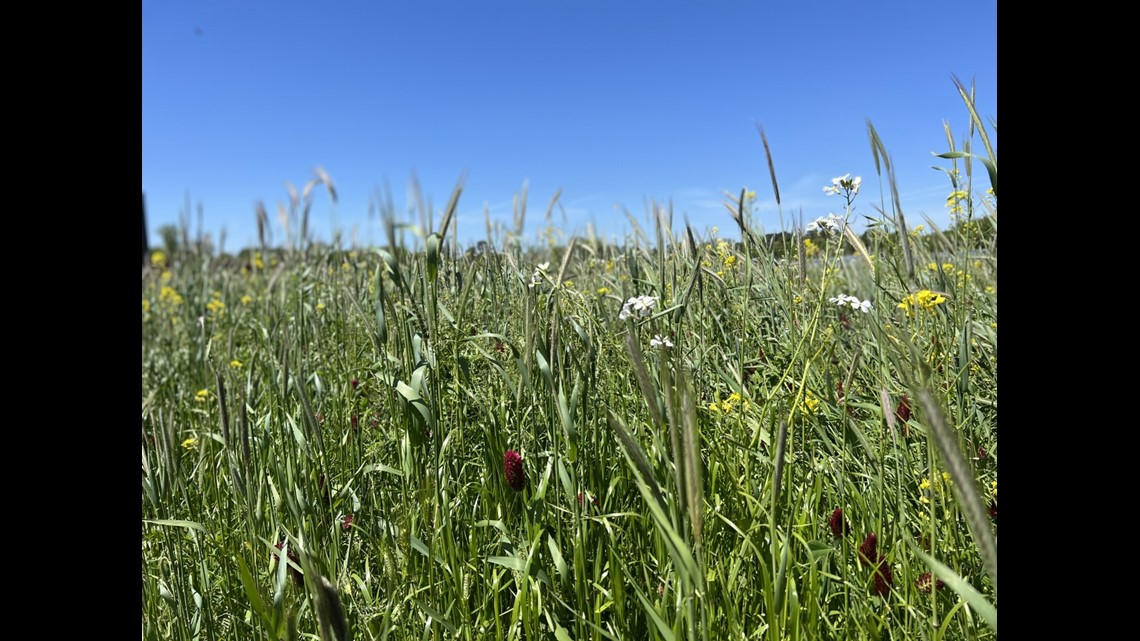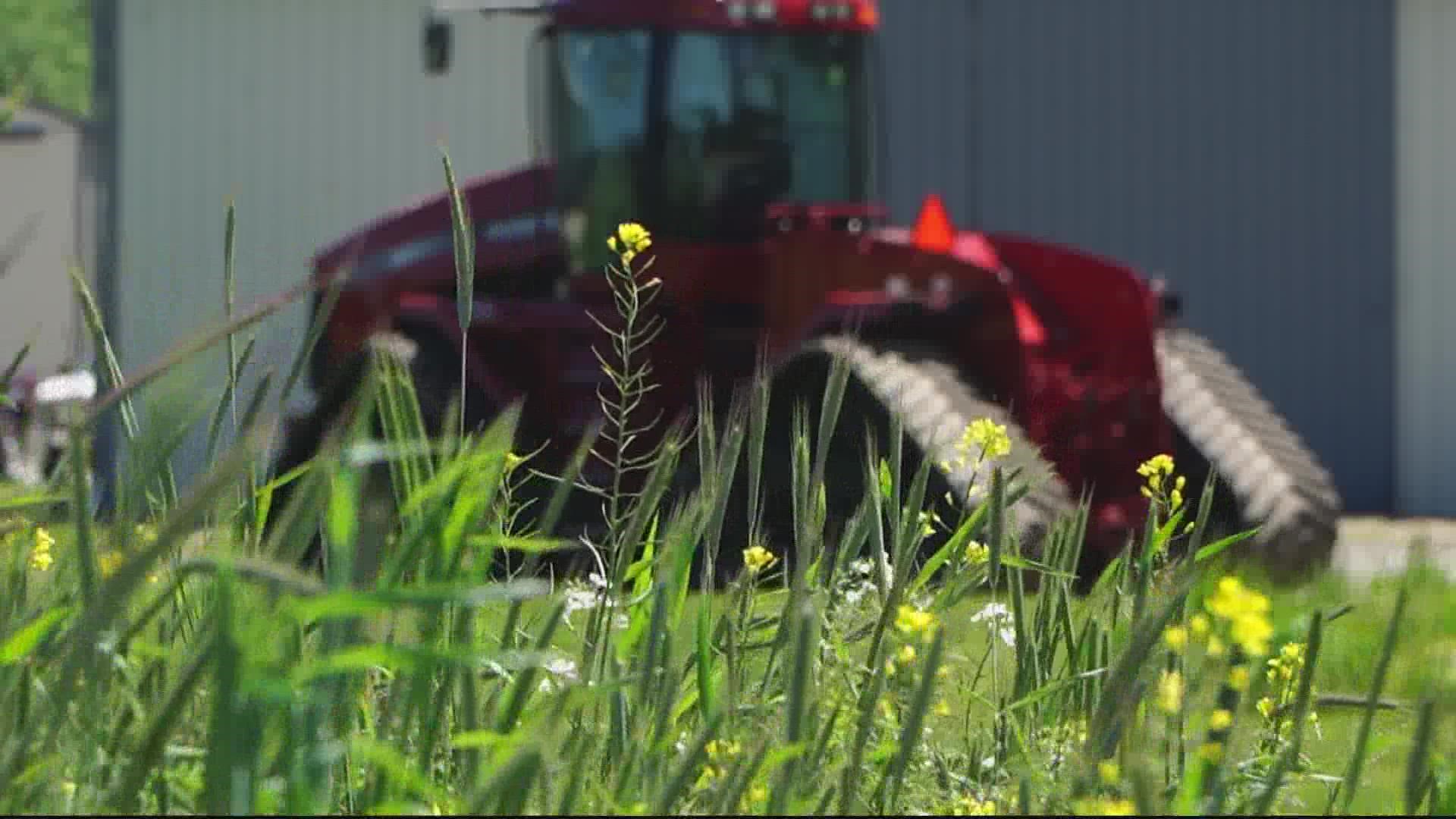WASHINGTON — Trey Hill is a third-generation farmer of Harborview Farm on the Eastern Shore of Maryland. He farms soy, wheat, corn – and carbon.
“As we started to do cover crops, we saw the soil changing, we saw the way that we farmed changing,” says Hill.
The state of Maryland started paying farmers to plant cover crops decades ago because they help keep the water clean.
“We're trying to pull up nutrients in the offseason with the cover crops so that we get less phosphorus and nitrogen into the bay and the rivers,” Hill explained.
However, over time, farmers noticed additional benefits to having roots in the ground year-round. For 5 months out of the year, fields serve as wheat, soy and corn crops, but once they're harvested they become a cover crop and each plant serves its own purpose.


“We'll plant 10, or 12 different seeds to really get the soil dynamic, get diverse," said Hill. "So that the roots underneath, through their diversity actually make it more monolithic and healthier.”
The idea is to use those crops to capture more carbon from the atmosphere than you release into it…and the benefits are tangible. The soil beneath a cover crop has 10 times more life in it. And – it’s better able to face the changing climate.
“Also [it] should help us when we get hotter, drier summers, which are forecasted," explained Hill. "It'll help insulate the soil and it'll hold more water. It also helps in the spring because it pulls water up as the springs are wetter and cooler. So yeah, it's a really nice fit to climate change.”
It’s also a nice fit for the marketplace. Farmers can actually sell the carbon they’ve captured to companies and individuals who want to offset their carbon dioxide footprint. As the traceability of carbon continues to improve, one day you may even be able to determine the environmental impact of what you’re eating. Where you now see verbiage like “non-GMO and antibiotic-free” on your groceries, you could one day see phrases like “free from carbon”.
But these changes take time and resources. Organizations like the Chesapeake Bay Foundation, Shore Rivers and the Nature Conservancy help farmers embrace new practices and assist with funding.
“We work in partnership with a lot of corporations and other partners to be able to try new things, pilot new ideas and to be able to, you know, get money where it's needed to be able to support those opportunities,” explained Amy Jacobs, the Chesapeake Bay Agriculture Program Director at the Nature Conservancy.
Hill is also doing his part to protect the environment by investing in updated, more precise equipment and limiting how much fertilizer is wasted. As well as installing solar panels that power his entire farm, five houses and one irrigation system.
“You have to be responsive to the climate. You have to be aware of climate change," Hill said. "So I think that for me, it's actually really fortunate that I get to make a difference.”

